Intel Core i3 N305 Performance
Instead of going through the entire Linux-Bench test suite, we are going to show a few performance and power numbers here to give a general sense of performance. This also gives us the opportunity to test with Linux/ Ubuntu instead of just Windows.
Python Linux 4.4.2 Kernel Compile Benchmark
This is one of the most requested benchmarks for STH over the past few years. The task was simple, we have a standard configuration file, the Linux 4.4.2 kernel from kernel.org, and make the standard auto-generated configuration utilizing every thread in the system. We are expressing results in terms of compiles per hour to make the results easier to read:
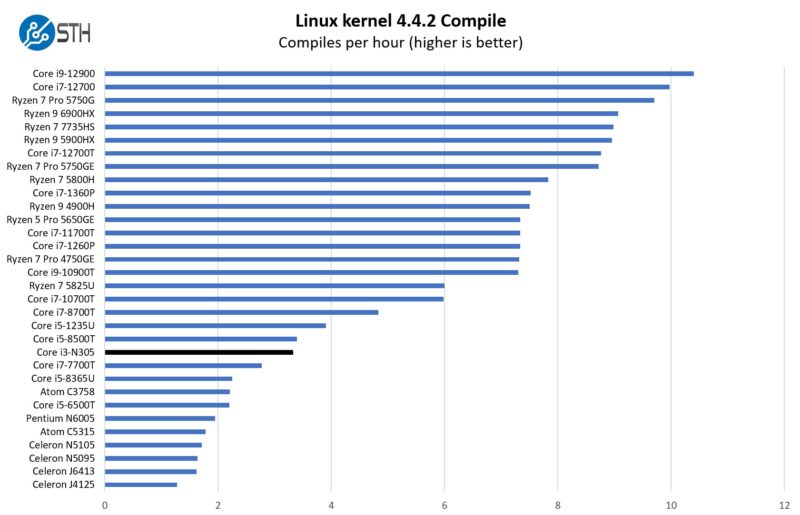
Overall, this is very good performance. We get performance around that of 35W TDP Project TinyMiniMicro nodes from 4-5 generations earlier. The trick is that this is using eight efficient E-cores instead of performance P-cores.
7-zip Compression Performance
7-zip is a widely used compression/ decompression program that works cross-platform. We started using the program during our early days with Windows testing. It is now part of Linux-Bench.
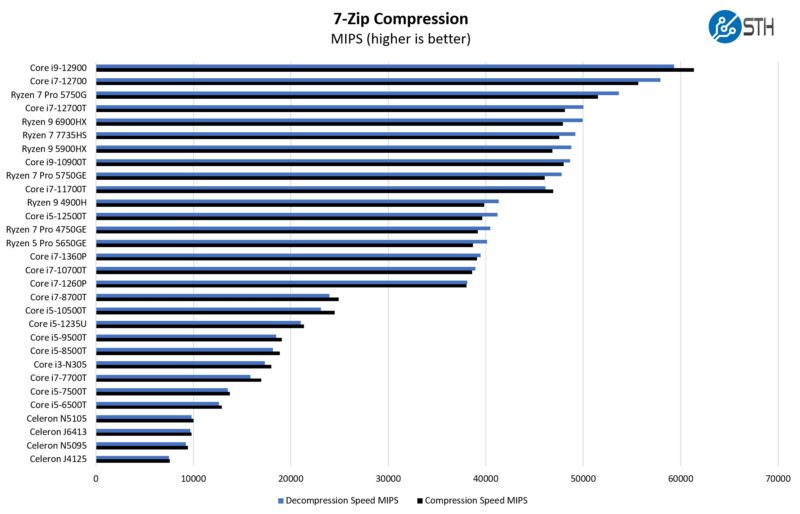
Something seen in these charts is just how big the gap is between the previous generations like the J4125 and N5105 have between them and the new Core i3 N305. That is a new architecture, twice as many cores, as well as higher power consumption.
OpenSSL Performance
OpenSSL is widely used to secure communications between servers. This is an important protocol in many server stacks. We first look at our sign tests:
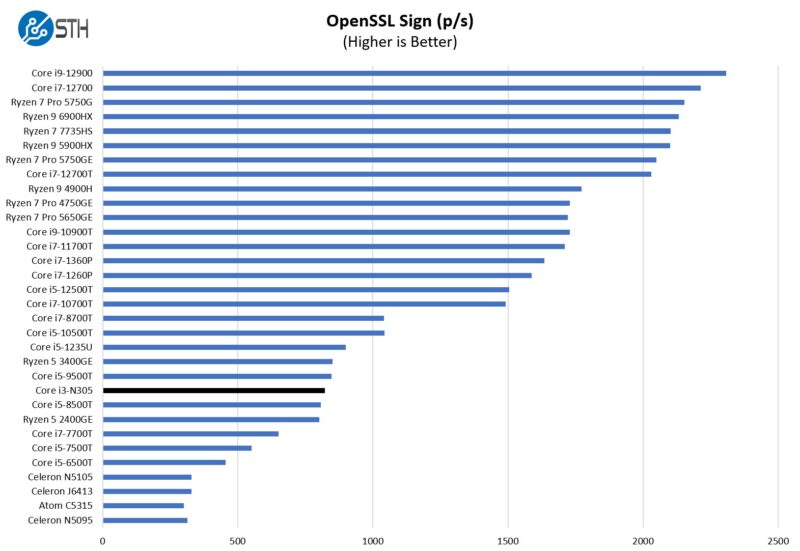
Here are the verify results:
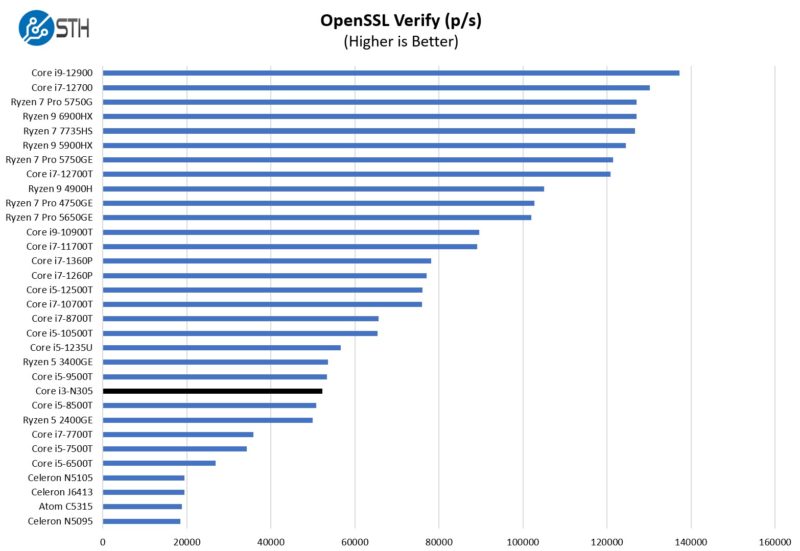
Although this is still a 15W TDP part, it is not quite as fast as the Intel Core i5-1235U we reviewed. Still, this is very good multi-threaded performance.
Geekbench 6 Performance
Here are a few quick comparisons via Geekbench 6. In the video, we also looked at the performance differences between different power plans, but this is the big one. Here is the Core i3 N305 versus the J4125. Both the single thread performance as well as the multi-threaded performance are much higher.
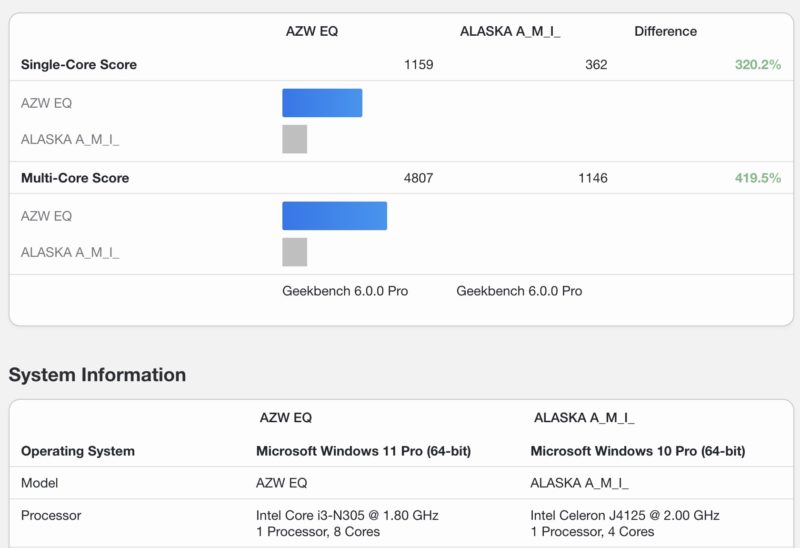
Here is the top-bin Intel Pentium Silver N6005 versus the Core i3 N305. Here the single core and multi core performance is much higher.
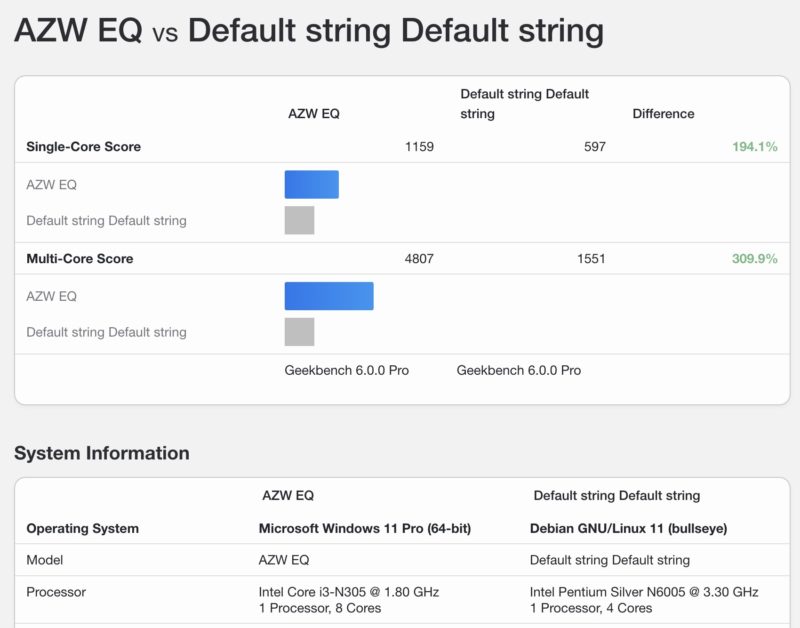
The single-threaded performance is what makes this feel more like a modern desktop. Here is an AMD Ryzen 5 Pro 3400GE from our Lenovo ThinkCentre M75q-1 Tiny AMD Ryzen-based TMM Review and the Alder Lake-N is very competitive.
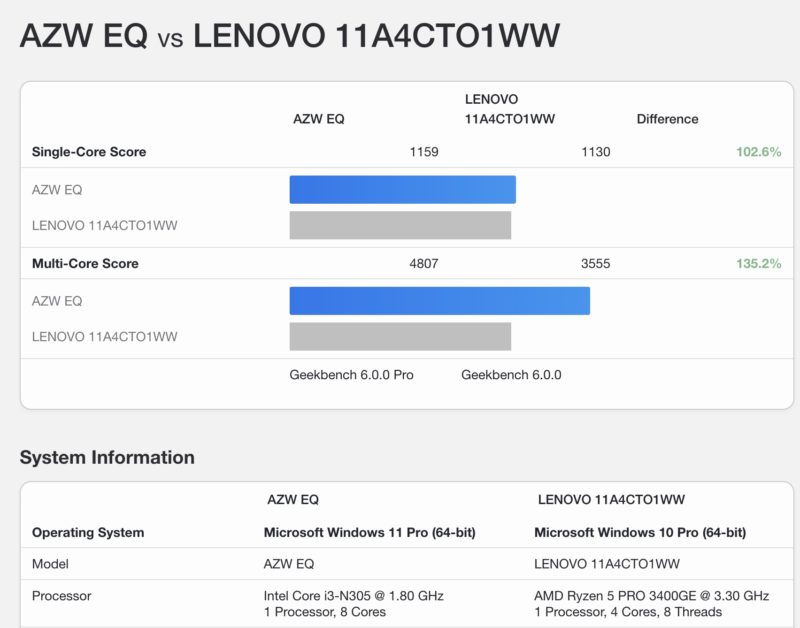
This is a significant performance jump over the older generation.
Storage Performance
We mentioned the 512GB PCIe Gen3 x1 linked NVMe SSD. We can clearly see the impact on performance with the CrystalDiskMark scores.
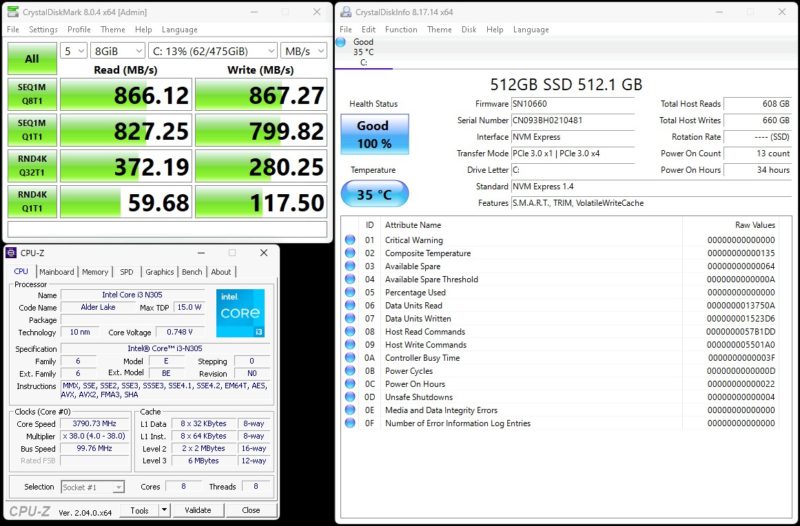
Overall, storage performance is not a strong point.
Next, let us get to the power consumption and a wild key lesson learned.

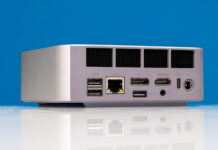
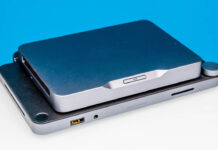
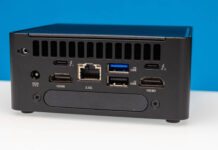
I got an N100 version to replace my mum’s old desktop, and was very impressed with the little 4 e-cores. So I can imagine the N305 is very impressive.
I haven’t seen anything with the N300 yet, also 8 cores but only 7W TDP.
Do Intel’s -N cpus have hardware AV1 decode? I’ve seen conflicting info from different sources. Can you verify? Thanks.
@Yuri yeah they do. https://www.servethehome.com/new-2023-n-series-gracemont-cpus-are-a-huge-upgrade/
I would be interested in a few of this items if:
– I could get a lower powered CPU as i3 is much more than I need;
– I did not have to pay “the Windows tax” since I would run Linux on them.
Other than that, the Intel NIC is preferable to a Realtek NIC IMHO. The single channel memory is not an issue nor is the memory amount supported.
Really interesting machine and the CPU is quite powerful.
What I find a bit strange is, why is the multicore score so low? It’s only 4 times the singlecore score, even though the CPU has 8 cores.
I think they’re selling out on power for 3.8GHz single core but then they’ve got to go back down for 8c. They’re running at a system power of 3w/c sustained. With all the NICs, fans, SSD, RAM, and PSU they’re at maybe 2w/c max. Even Arm needs low clocks to stay 1.5-2w/c.
So the E cores not as efficient as one would think (I already figured out since alder lake), they accommodated 8 cores by increasing power budgets usually expected for this class
If you put this next to a AMD phoenix 15W…
Also for those asking for Intel, many i225s have issues especially on windows. 226 might finally get rid of the jinx but the realtek 2.5 solutions is actually far more stable and works with 2.5 routers/switches better.
Great review of this. That’s good power consumption. Henkel’s breakdown is good. I’d hope you can do one like that in future articles. I’d like to see the N100 too.
Realtek 2.5Gb still suffers from when you stress them they freak out. They’re cheap but not good. We’ve got around 1,000 ports of PC’s now with Realtek and Intel i225. We’ve only got like 30 i226’s so far. Users complain about Realtek 4:1 over Intel FWIW.
So it’s the same performance as 6-core i5-8500T from 2017 for the same TDP? Only a bit cheaper. But it’s always better to have X performance from 6 cores (8500T) than from 8(N305). Where’s the innovation, Intel? Where’s the generational growth?
What kind of core count/speeds do we need to drive a full 10GbE dual-port firewall appliance?
I’d like to start thinking about retrofitting my home network once again now that some of the new motherboards are coming with 5GbE NICs onboard.
I currently have an 11th gen NUC with dual 2.5GbE running firewall duties, and it’s obviously overkill. But would it be right-sized if the NICs were 10GbE? Or still overkill. I only run ~100 firewall rules.
An AMD 5825U w/ i226 seems like a better option for many home lan purposes (ESXi in particular). Equivalent CPU TDP, almost twice the cpu benchmarks, same i226 NICs available paired with, usually ships two SODIMM slots so you can go to 64GB. What am I missing? I think I’d easily jump on the intel unit if it had two DIMMs, otherwise AMD is liable to take my money for 4 or more of these units.
This is a very interesting CPU but not for these prices. Beelink is now discounting the 5500U unit for the same price. That is a lot more CPU and double the GPU, though I do think you lose AV1 decoding (shouldn’t be an issue with this CPU).
Setup an N305 based router for a friend a couple weeks back. Runs super smooth with OPNsense. Would love to see an itx/nas variant.
Does this N305-bearing EQ 12 Pro actually exist? Both links provided take us to systems not wielding an N305. Would absolutely love to buy one of these, but I’m not seeing them anywhere. Even Bee Link’s website only mentions an N100 version. Any thoughts here?
You would search for the ALN50(i3-n305) mini PC.